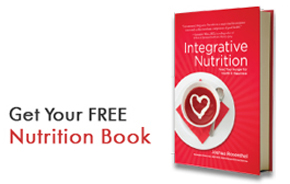The body is amazing. It knows when to go to sleep, when to wake up, and when to go to the bathroom. It maintains a temperature of 98.6 degrees, repairs itself when wounded and knows the miracle of pregnancy and childbirth. Your heart never misses a beat. Your lungs are always breathing. The body is a super-computer, and it never makes mistakes.
Look at the foods, deficits and behaviors in your life that are the underlying causes of your cravings. Many people view cravings as weakness, but really they are important messages meant to assist you in maintaining balance. When you experience a craving, deconstruct it. Ask yourself, what does my body want and why?
The eight primary causes of cravings are:
1. Lack of primary food. Being dissatisfied with a relationship or having an inappropriate exercise routine (too much, too little or the wrong kind), being bored, stressed, uninspired by a job, or lacking a spiritual practice may all cause emotional eating. Eating can be used as a substitute for entertainment or to fill the void of primary food.
2. Water. Lack of water can send the message that you are thirsty and on the verge of dehydration. Dehydration can manifest as a mild hunger, so the first thing to do when you get a craving is drink a full glass of water. Excess water can also cause cravings, so be sure that your water intake is well balanced.
3. Yin/yang imbalance. Certain foods have more yin qualities (expansive) while other foods have more yang qualities (contractive). Eating foods that are either extremely yin or extremely yang causes cravings in order to maintain balance. For example, eating a diet too rich in sugar (yin) may cause a craving for meat (yang). Eating too many raw foods (yin) may cause cravings for extremely cooked (dehydrated) foods or vise versa.
4. Inside coming out. Often times, cravings come from foods that we have recently eaten, foods eaten by our ancestors, or foods from our childhood. A clever way to satisfy these cravings is to eat a healthier version of one’s ancestral or childhood foods.
5. Seasonal. Often the body craves foods that balance the elements of the season. In the spring, people crave detoxifying foods like leafy greens or citrus foods. In the summer, people crave cooling foods like fruit, raw foods and ice cream, and in the fall people crave grounding foods like squash, onions and nuts. During winter, many crave hot and heat-producing foods like meat, oil and fat. Cravings can also be associated with the holidays, for foods like turkey, eggnog or sweets, etc.
6. Lack of nutrients. If the body has inadequate nutrients, it will produce odd cravings. For example, inadequate mineral levels produce salt cravings, and overall inadequate nutrition produces cravings for non-nutritional forms of energy, like caffeine.
7. Hormonal. When women experience menstruation, pregnancy or menopause, fluctuating testosterone and estrogen levels may cause unique cravings.
8. De-evolution. When things are going extremely well, sometimes a self-sabotage syndrome happens. We crave foods that throw us off, thus creating more cravings to balance ourselves. This often happens from low blood sugar and may result in strong mood swings.
GET EVEN HEALTHIER!
Do you intend to get to grips with your cravings? Make a plan to succeed by getting the support you need! As a Health Coach, I specialize in helping people make their own healthy changes. Ready to get started? Schedule an initial complimentary consultation with me today – or pass this offer on to someone you care about!










Leave A Response